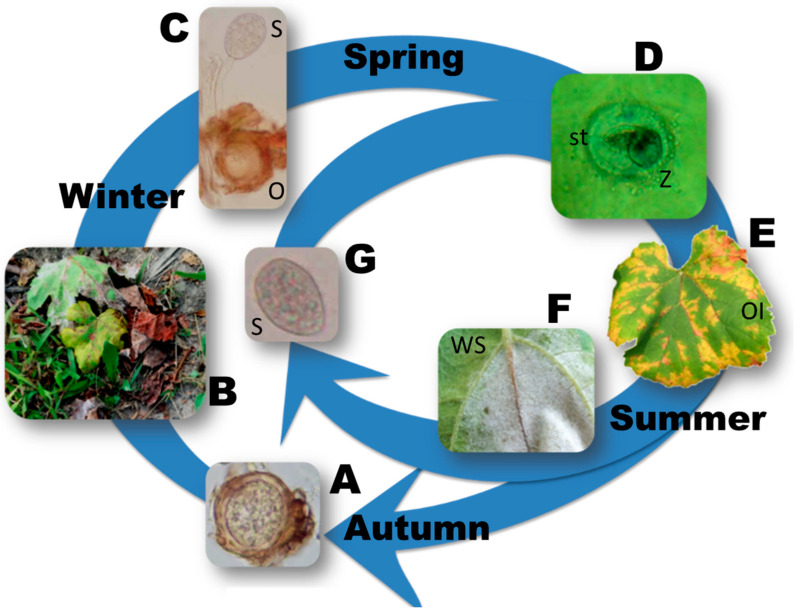Figure 1.
Disease cycle of P. viticola: the pathogen survives the winter period as oospores, i.e., the overwintering structures differentiated by sexual reproduction in autumn (A), embedded in dead leaves on the vineyard floor (B). With favorable weather conditions, oospores typically produce sporangia (C) that, in turn, produce zoospores (D). Zoospores are splashed by rain onto leaves and other receptive tissues of the grapevines, originating the primary infections through stomata penetration (D). Disease symptoms, visible as yellow discoloration (oil spots, Ol) on the upper side of the leaves (E), appear at the end of the incubation period and are followed, in high humidity conditions, by the emission of sporangiophores (F) with sporangia (G) that will cause secondary infections through the emission of new zoospores. O = oospore; S = sporangium; st = stoma; Z = zoospore; OI = oil spot symptom on the upper side of the leaf; WS = white sporulation, consisting of sporangiophores and sporangia, on the underside of the leaf.

